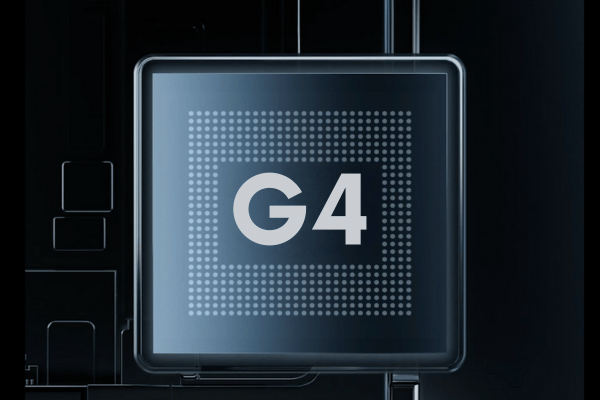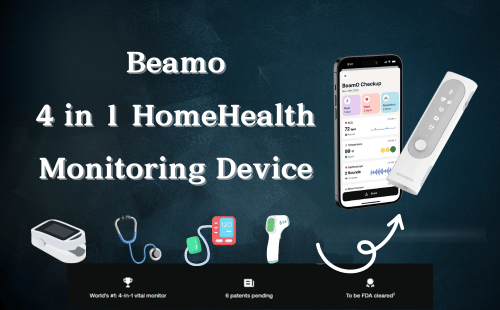The smartphone industry is abuzz with excitement as Google gears up for its next major launch – the Pixel 9 series. Set to be unveiled on August 13th, this new lineup promises to push the boundaries of smartphone technology with advanced AI integration, improved hardware, and innovative features. As Google aims to capture a larger market share in the competitive smartphone landscape, the Pixel 9 series represents a significant step forward in the company’s mobile strategy.
However, as with any new technology, it’s essential to look beyond the hype and examine both the potential benefits and drawbacks. In this comprehensive review, we’ll delve into the details of the Pixel 9 series, exploring its features, specifications, and what they mean for users in the competitive smartphone market. From cutting-edge AI capabilities to potential concerns about long-term performance, we’ll provide an in-depth analysis to help you make an informed decision about Google’s latest offering.
1. The Pixel 9 Lineup: Four Models to Cater to Every User
Google is expanding its offerings with the Pixel 9 series, introducing four distinct models:
- Pixel 9
- Pixel 9 Pro
- Pixel 9 Pro XL
- Pixel 9 Pro Fold
This diverse range aims to cater to various user preferences, from those who prefer compact devices to those looking for larger screens or foldable options. Each model comes with its own set of features and specifications, allowing consumers to choose the device that best fits their needs and budget.

1.1 Pixel 9: The Compact Powerhouse
The standard Pixel 9 is designed for users who prefer a more compact device without compromising on performance. It offers a balance of features and affordability, making it an attractive option for budget-conscious consumers or those upgrading from older models.
1.2 Pixel 9 Pro: Advanced Features in a Manageable Size
The Pixel 9 Pro builds upon the standard model, offering enhanced camera capabilities and a more premium build. It’s targeted at users who want top-tier features but don’t necessarily need a larger display.
1.3 Pixel 9 Pro XL: The Ultimate Pixel Experience
For those who crave a larger screen and the most advanced features, the Pixel 9 Pro XL is Google’s answer. It boasts the largest display in the lineup and is likely to offer the best performance and battery life.
1.4 Pixel 9 Pro Fold: Google’s Foray into Foldables
In a first for the Pixel series, Google is introducing a foldable model. The Pixel 9 Pro Fold is set to compete with devices like Samsung’s Galaxy Z Fold series, offering a unique form factor that combines a smartphone and tablet experience.
2. Design and Display: A Fresh Look for the Pixel Series

2.1 Design Evolution
The Pixel 9 series marks a significant departure from its predecessors in terms of design. Key features include:
- Flat sides reminiscent of recent iPhone models, providing a more modern and sleek appearance
- A distinctive camera bar that extends across the back, unifying the design across all models
- Matte sides and glossy backs to minimize fingerprints and enhance the premium feel
This design refresh aims to give the Pixel series a more distinctive and recognizable look in the crowded smartphone market. The use of high-quality materials such as aluminum for the frame and Gorilla Glass for the front and back panels ensures durability and a premium feel.
2.2 Display Specifications
- Pixel 9: 6.3-inch AMOLED display with a resolution of 2400 x 1080 pixels
- Pixel 9 Pro: 6.3-inch Super Actua display with a resolution of 3120 x 1440 pixels
- Pixel 9 Pro XL: 6.8-inch Super Actua display with a resolution of 3200 x 1440 pixels
All models feature LTPO technology, allowing for variable refresh rates from 1Hz to 120Hz, which helps balance smooth performance with battery efficiency. The Pro models boast impressive peak brightness levels of up to 2,000 nits, ensuring excellent visibility even in bright sunlight. The regular Pixel 9 offers up to 1,800 nits of peak brightness.
2.3 Display Innovations
Google has implemented several display innovations across the Pixel 9 series:
- Enhanced color accuracy with support for the DCI-P3 wide color gamut
- Improved HDR performance for more vivid and lifelike video playback
- Reduced blue light emission to help minimize eye strain during prolonged use
- Always-on display functionality with new customization options
These display improvements not only enhance the visual experience but also contribute to better battery life and user comfort.

3. Camera Capabilities: Pushing the Boundaries of Smartphone Photography
Google has long been known for its exceptional camera software, and the Pixel 9 series aims to maintain this reputation while also making significant hardware improvements.
3.1 Pro Models Camera Setup
- 50MP primary sensor with larger pixel size for improved low-light performance
- 48MP ultra-wide lens with a 120-degree field of view
- 48MP telephoto lens with 5x optical zoom and up to 30x digital zoom
- 42MP front-facing camera with improved Night Sight capabilities
3.2 Regular Pixel 9 and Pixel 9 Pro Fold
- 50MP primary sensor
- 12MP ultra-wide lens
- 10MP front-facing camera
3.3 Camera Software Enhancements

Google has further refined its computational photography algorithms, introducing several new features:
- Enhanced Night Sight mode for even better low-light photography
- Improved Portrait mode with more accurate depth mapping and bokeh effects
- New “Action Pan” mode for capturing motion blur in sports and action shots
- Advanced HDR+ processing for more balanced exposures in high-contrast scenes
3.4 Video Capabilities
The Pixel 9 series also sees improvements in video recording:
- 8K video recording at 30fps on Pro models (4K at 60fps on standard Pixel 9)
- Improved electronic image stabilization for smoother handheld footage
- Cinematic Pan mode for professional-looking panning shots
- Enhanced audio recording with directional noise reduction
These advanced camera systems promise to deliver exceptional photo quality and versatility, catering to both casual users and photography enthusiasts. The combination of hardware improvements and Google’s renowned software processing aims to keep the Pixel series at the forefront of smartphone photography.
4. Performance and Hardware: The Tensor G4 Processor

4.1 Pros of Tensor G4
- Designed for optimal performance and efficiency, with a focus on AI and machine learning tasks
- Enhanced AI capabilities, enabling more sophisticated on-device processing for features like real-time translation and advanced image processing
- Improved Neural Processing Unit (NPU) for faster and more efficient AI computations
- Custom-designed security core for enhanced data protection and privacy features
4.2 Potential Drawbacks
- May not match the raw performance of competitors like Snapdragon or Apple’s A-series chips in high-intensity tasks such as gaming or video editing
- Potential heating issues during demanding applications, which could lead to throttling and reduced performance over extended use
- Limited track record compared to more established mobile processors, which may raise concerns about long-term reliability and optimization
4.3 RAM Configurations
- Regular Pixel 9: Up to 12GB of LPDDR5 RAM
- Pro models: 16GB of LPDDR5X RAM
These specifications should ensure smooth multitasking and responsiveness for most users. The increased RAM in the Pro models is particularly beneficial for power users who frequently switch between multiple apps or work with large files.
4.4 Storage Options
- Regular Pixel 9: 128GB, 256GB
- Pro models: 256GB, 512GB, 1TB
All models use UFS 4.0 storage for faster read and write speeds, improving app loading times and file transfer rates.
4.5 Connectivity
- 5G support across all models, including mmWave in select regions
- Wi-Fi 7 compatibility for future-proofing and faster wireless connectivity
- Bluetooth 5.3 for improved wireless audio quality and lower power consumption
- Ultra-Wideband (UWB) chip in Pro models for precise spatial awareness and improved device tracking
5. AI Integration: The Future of Smartphone Technology
The Pixel 9 series heavily emphasizes AI integration, with several innovative features designed to enhance user experience and productivity.

5.1 Key AI Features
- Circle to Search: Allows users to quickly search for information by circling content on their screens, leveraging Google’s vast knowledge graph for instant results
- Gemini assistance: Provides AI-powered insights based on what the camera sees, offering real-time information about objects, landmarks, and text
- Pixel Screenshot: Helps users remember important information from screenshots by automatically extracting key details like dates, addresses, and contact information
- Advanced voice recognition: Improved accuracy in noisy environments and support for multiple languages without switching settings
- AI-enhanced call screening: Better spam detection and more natural-sounding automated responses
5.2 Gemini Advanced Access
Buyers will receive one year of free access to Gemini Advanced, a service typically priced at $227. This premium AI service offers:
- More complex task completion and reasoning capabilities
- Enhanced creative tools for writing and brainstorming
- Advanced coding assistance and debugging
- Personalized productivity recommendations
While these AI features are impressive, their practical usefulness in day-to-day life remains to be seen. The real-world impact on battery life and privacy concerns surrounding always-on AI features are also factors to consider.
5.3 On-Device AI Processing
Google emphasizes that many AI features run directly on the device, thanks to the Tensor G4 chip. This approach offers several benefits:
- Improved privacy by keeping sensitive data on the device
- Faster response times for AI-powered features
- Reduced reliance on internet connectivity for AI functionality
6. Battery Life and Charging
Battery life is a crucial factor for smartphones, and Google claims significant improvements in this area with the Pixel 9 series.
6.1 Battery Capacity
- Pixel 9: 4,500 mAh
- Pixel 9 Pro: 4,950 mAh
- Pixel 9 Pro XL: 5,400 mAh
- Pixel 9 Pro Fold: 4,800 mAh (main battery) + 1,200 mAh (cover display)
Google claims that the Pro models will offer a 24-hour battery life, a significant advantage for heavy users. However, real-world testing will be necessary to verify these claims, especially considering the power demands of high-refresh-rate displays and 5G connectivity.
6.2 Charging Capabilities
- Wired charging: Up to 45W fast charging on Pro models, 33W on the standard Pixel 9
- Wireless charging: Up to 23W wireless charging with the Pixel Stand (2nd gen)
- Reverse wireless charging: Ability to charge other Qi-compatible devices
6.3 Battery Health Features
- Adaptive charging: Learns user patterns to optimize charging and reduce battery wear
- Extreme Battery Saver mode: Extends battery life by limiting app usage and background processes
- Battery health monitoring: Provides insights into battery degradation over time
7. Software and Updates: A Long-Term Commitment
Google’s software experience has always been a strong selling point for Pixel devices, and the Pixel 9 series continues this tradition with some notable enhancements.
7.1 Update Promise
Google promises 7 years of security updates and Pixel Drops for the Pixel 9 series. This long-term support is a significant selling point, ensuring users will receive the latest features and security enhancements for years to come. The commitment includes:
- Monthly security patches
- Quarterly Pixel Feature Drops with new functionalities
- Major Android version updates
7.2 Android Version Considerations
It’s worth noting that the Pixel 9 series will launch with Android 14, meaning it will only be eligible for updates up to Android 21, not Android 22 as some might expect. This is due to the release timing in relation to the annual Android update cycle.
7.3 Pixel-Exclusive Features
The Pixel 9 series comes with several software features exclusive to Google’s devices:
- Call Screen: Automatically screens unknown callers
- Now Playing: Always-on music recognition
- Personal Safety app: Emergency features and car crash detection
- Live Caption: Real-time captioning for any audio played on the device
7.4 Privacy and Security
Google emphasizes privacy and security with the Pixel 9 series:
- Titan M2 security chip for hardware-based security
- Privacy Dashboard for easy monitoring of app permissions
- Camera and microphone usage indicators
- Built-in VPN service powered by Google One
8. Pricing and Availability
While exact pricing details haven’t been confirmed, the Pixel 9 series is expected to be priced competitively with other flagship smartphones. Based on industry trends and previous Pixel pricing, we can make some educated guesses.
8.1 Estimated Pricing
- Pixel 9: Starting at $699 for the 128GB model
- Pixel 9 Pro: Starting at $899 for the 256GB model
- Pixel 9 Pro XL: Starting at $999 for the 256GB model
- Pixel 9 Pro Fold: Starting at $1,799 for the 256GB model
These prices are speculative and subject to change. Google may adjust pricing based on market conditions and competitor strategies.
8.2 Availability
The Pixel 9 series is expected to launch initially in key markets including:
- United States
- Canada
- United Kingdom
- Australia
- Germany
- France
- Japan
- Singapore
Availability in other countries may follow in the months after the initial release.
8.3 Pre-order Bonuses
Google typically offers pre-order bonuses to incentivize early adopters. For the Pixel 9 series, potential bonuses might include:
- Free Pixel Buds Pro with Pixel 9 Pro or Pro XL purchases
- Extended Gemini Advanced subscription (18 months instead of 12)
- Store credit for use on other Google products
8.4 Color Options
Pixel 9 Pro and Pro XL:
- Obsidian (Black)
- Porcelain (White)
- Rose (Pink)
- Hazel (Green-gray)
Regular Pixel 9:
- Porcelain (White)
- Obsidian (Black)
- Rose (Pink)
- Green
Pixel 9 Pro Fold:
- Obsidian (Black)
- Porcelain (White)
The color options aim to cater to various personal preferences while maintaining a cohesive design language across the lineup.
9. Potential Drawbacks and Concerns
Despite the impressive features, some potential drawbacks should be considered when evaluating the Pixel 9 series:
9.1 Processor Concerns
- The longevity of the Tensor G4 processor compared to competitors remains uncertain
- Potential thermal management issues during intensive tasks
- Possible limitations in high-end gaming performance compared to Snapdragon or Apple chips
9.2 Software Update Practicality
- The practicality of 7 years of software updates on aging hardware is questionable
- Later updates may not be optimized for older hardware, potentially leading to performance issues
9.3 AI Feature Relevance
- The real-world usefulness of some AI features may be limited for average users
- Privacy concerns surrounding always-on AI functionalities
9.4 Release Cycle Impact
- The shift in release cycle and its impact on Android version updates may confuse some users
- Potential for the device to feel outdated sooner due to misalignment with the Android release schedule
9.5 Ecosystem Lock-in
- Some features may require deeper integration into the Google ecosystem, potentially limiting flexibility for users who prefer mixed-ecosystem setups
9.6 Price-to-Performance Ratio
- The high-end models, especially the Pixel 9 Pro Fold, may be priced beyond what some consumers consider reasonable for the features offered
10. Comparison with Competitors
The Pixel 9 series will face stiff competition from established players in the smartphone market. Here’s how it stacks up against key rivals:
10.1 vs. Apple iPhone 16 Series (anticipated)
- Pros for Pixel: More advanced AI features, potentially better camera performance in low light
- Pros for iPhone: More powerful processor, established ecosystem, better resale value
10.2 vs. Samsung Galaxy S24 Series
- Pros for Pixel: Cleaner software experience, longer software support
- Pros for Samsung: More diverse product lineup, S Pen support on Ultra model, potentially better display technology
10.3 vs. OnePlus 12 Series
- Pros for Pixel: Better camera performance, more consistent software updates
- Pros for OnePlus: Faster charging, potentially more powerful processor
10.4 Key Differentiators for Pixel 9 Series
- Google’s AI-first approach to features and user experience
- Clean, stock Android experience with exclusive Pixel features
- Potentially superior computational photography capabilities
- Longer software support compared to most Android competitors
While Google offers unique software features and AI integration, it may lag behind in raw processing power and established ecosystem advantages offered by competitors like Apple and Samsung.
Conclusion
The Google Pixel 9 series represents a significant step forward in smartphone technology, offering advanced AI integration, impressive camera capabilities, and long-term software support. The expansion to four models, including a foldable option, shows Google’s ambition to cater to a wider range of users and compete more directly with established market leaders.
Key strengths of the Pixel 9 series include:
- Innovative AI features that could redefine smartphone usage
- Exceptional camera performance, especially in challenging lighting conditions
- Clean, bloatware-free software experience with exclusive Pixel features
- Industry-leading software support commitment
However, potential buyers should carefully consider their needs and usage patterns before making a decision. Power users or those requiring top-tier processing capabilities might want to consider alternatives or wait for real-world performance reviews, especially given the uncertainties surrounding the Tensor G4 processor.
For those deeply invested in the Google ecosystem or those who prioritize camera quality and AI features, the Pixel 9 series could be an excellent choice. The standard Pixel 9 offers a compelling option for those seeking a more affordable entry point into Google’s ecosystem, while the Pro models cater to users demanding cutting-edge features and performance.
As we approach the August 13th launch event, more details are likely to emerge. Prospective buyers should stay tuned for hands-on reviews and comparisons to make an informed decision about whether the Pixel 9 series is the right choice for them. Ultimately, the success of the Pixel 9 series will depend on how well its AI-centric approach resonates with consumers and whether it can deliver on its promises of enhanced user experience and long-term value.







